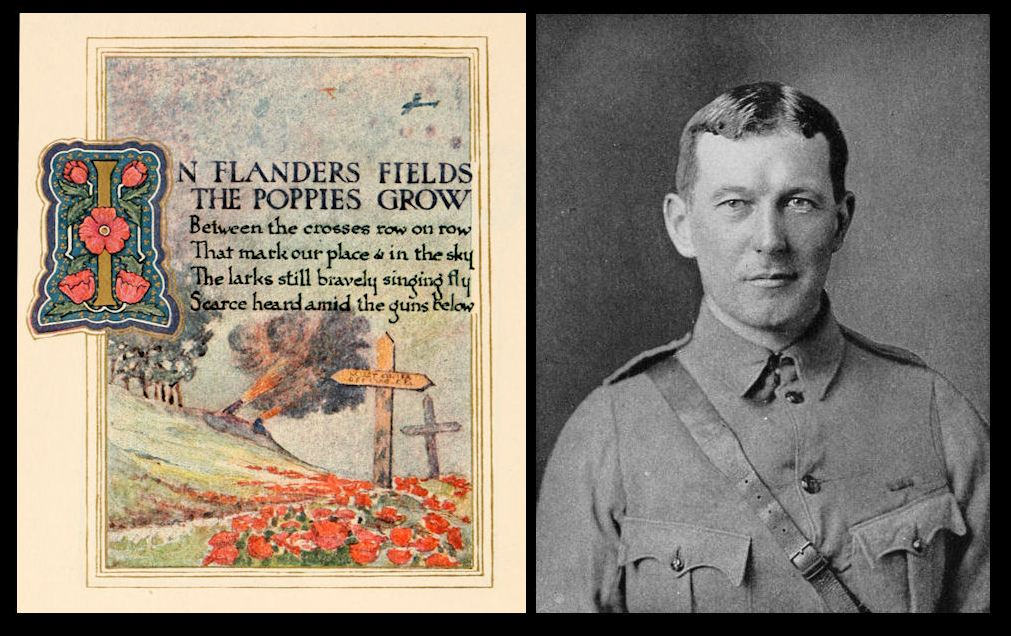Browse "Things"
-
Article
Imperial Munitions Board
Imperial Munitions Board, established November 1915 in Canada by the British Ministry of Munitions, with Canadian government approval. Headed by J.W. Flavelle, a prominent Toronto businessman, the board was responsible for letting contracts on behalf of the British government for the construction of war materials in Canada.
"https://d2ttikhf7xbzbs.cloudfront.net/media/media/6d4e231e-f064-4897-b648-57e415ca7a8c.jpg" // resources/views/front/categories/view.blade.php
https://d2ttikhf7xbzbs.cloudfront.net/media/media/6d4e231e-f064-4897-b648-57e415ca7a8c.jpg
-
Article
Imperial Oil Limited
In 1995 it had sales or operating revenues of $9.28 billion, assets of $12.0 billion and 7800 employees. In 1987 Imperial bought Sulpetro, a Calgary-based natural gas producer, and in 1990 it completed its merger with Texaco Canada.
"https://d2ttikhf7xbzbs.cloudfront.net/media/media/87a23012-97b0-4fe6-ab3f-236c1704ea9e.jpg" // resources/views/front/categories/view.blade.php
https://d2ttikhf7xbzbs.cloudfront.net/media/media/87a23012-97b0-4fe6-ab3f-236c1704ea9e.jpg
-
Article
IODE (Imperial Order Daughters of the Empire)
The IODE is a national women’s charitable organization in Canada. Founded in 1900, the organization’s original intent was to support and promote patriotism to the British Empire. (See Imperialism.) The IODE contributed to the construction of an Anglo-Canadian identity in the image of Britain. Throughout this time, the IODE improved the lives of some women in Canada, and championed various causes, such as improving health care and producing strong Canadian citizens. However, the organization was, at times, complicit in racism and oppression. Increasingly aware of this problem, the organization changed its name to IODE in 1978-9 and became more Canada-centric. Today, IODE focuses on the welfare of children, education and community service.
"https://d2ttikhf7xbzbs.cloudfront.net/IODE-1.jpg" // resources/views/front/categories/view.blade.php
https://d2ttikhf7xbzbs.cloudfront.net/IODE-1.jpg
-
Article
Imperialism
Support for the British Empire and imperialism was strong in much of Canada in the decades after Confederation. But gradually, imperialist loyalties declined and Canadians demanded and won full autonomy within the empire.
"https://d2ttikhf7xbzbs.cloudfront.net/media/media/1558a81b-d087-438f-bb69-6c19774bd62a.jpg" // resources/views/front/categories/view.blade.php
https://d2ttikhf7xbzbs.cloudfront.net/media/media/1558a81b-d087-438f-bb69-6c19774bd62a.jpg
-
Article
Imports to Canada
In international trade, imports refer to goods and services purchased by Canadian residents from residents of other countries. Billions of dollars of goods and services cross Canada’s border each year. In 2019, Canadians imported a total of $768 billion worth of goods and services. Canada’s largest source of imports by far is the United States. (See Canada-US Economic Relations.) The European Union, China and Mexico are also major sources of imported goods and services.
"https://d2ttikhf7xbzbs.cloudfront.net/media/new_article_images/ImportsToCanada/COSCO_Shipping_Universe_&_COSCO_Shipping_Azalea_(ship,_2019)_IMO_9785756,_Maasmond_pic.jpg" // resources/views/front/categories/view.blade.php
https://d2ttikhf7xbzbs.cloudfront.net/media/new_article_images/ImportsToCanada/COSCO_Shipping_Universe_&_COSCO_Shipping_Azalea_(ship,_2019)_IMO_9785756,_Maasmond_pic.jpg_IMO_9785756,_Maasmond_pic.jpg)
-
Article
Improvement District
Improvement District, a municipal corporation whose powers are exercised by a trustee or board of trustees appointed by the provincial government. Unlike most municipalities, which are subject to the supervision of both the province and local electors, trustees are under provincial supervision only.
"https://development.thecanadianencyclopedia.ca/images/tce_placeholder.jpg?v=e9dca980c9bdb3aa11e832e7ea94f5d9" // resources/views/front/categories/view.blade.php
https://development.thecanadianencyclopedia.ca/images/tce_placeholder.jpg?v=e9dca980c9bdb3aa11e832e7ea94f5d9
-
Article
Imrie & Graham
Imrie & Graham. Toronto firm of book, job, and music printers and music publishers active 1884-ca 1909. John Imrie, a printer and poet (b Glasgow 1846, d Toronto 1902), moved to Toronto in 1871.
"https://development.thecanadianencyclopedia.ca/images/tce_placeholder.jpg?v=e9dca980c9bdb3aa11e832e7ea94f5d9" // resources/views/front/categories/view.blade.php
https://development.thecanadianencyclopedia.ca/images/tce_placeholder.jpg?v=e9dca980c9bdb3aa11e832e7ea94f5d9
-
Interview
In Conversation with Rod Matheson
Social Media & Outreach Editor Zach Parrott interviews Rod Matheson for The Canadian Encyclopedia.
"https://d2ttikhf7xbzbs.cloudfront.net/media/media/53376be8-b6de-431d-bf44-315cba10770f.jpg" // resources/views/front/categories/view.blade.php
https://d2ttikhf7xbzbs.cloudfront.net/media/media/53376be8-b6de-431d-bf44-315cba10770f.jpg
-
Article
In Flanders Fields
One of history's most famous wartime poems, "In Flanders Fields" was written during the First World War by Canadian officer and surgeon John McCrae.
"https://d2ttikhf7xbzbs.cloudfront.net/media/media/4be09c8b-7a2d-4c49-8972-670e287489aa.jpg" // resources/views/front/categories/view.blade.php
https://d2ttikhf7xbzbs.cloudfront.net/media/media/4be09c8b-7a2d-4c49-8972-670e287489aa.jpg
-
Article
In Flanders Fields Music
In Flanders Fields is a poem which, in various musical settings, has become a traditional part of Remembrance Day services commemorating those killed in the First World War, 11 November 1918, and subsequent conflicts.
"https://development.thecanadianencyclopedia.ca/images/tce_placeholder.jpg?v=e9dca980c9bdb3aa11e832e7ea94f5d9" // resources/views/front/categories/view.blade.php
https://development.thecanadianencyclopedia.ca/images/tce_placeholder.jpg?v=e9dca980c9bdb3aa11e832e7ea94f5d9
-
Article
In-line Skating
In-line skating is a recent recreational sport. During the 1990s it experienced an incredible boom that relegated traditional roller skating to the museum.
"https://development.thecanadianencyclopedia.ca/images/tce_placeholder.jpg?v=e9dca980c9bdb3aa11e832e7ea94f5d9" // resources/views/front/categories/view.blade.php
https://development.thecanadianencyclopedia.ca/images/tce_placeholder.jpg?v=e9dca980c9bdb3aa11e832e7ea94f5d9
-
Article
Incendies
The film Incendies, written and directed by Denis VILLENEUVE and inspired by Wajdi MOUAWAD's play, opened in 2010. A Canada-France coproduction shot in Montréal and Jordan, it describes the shattering quest of a pair of twins.
"https://development.thecanadianencyclopedia.ca/images/tce_placeholder.jpg?v=e9dca980c9bdb3aa11e832e7ea94f5d9" // resources/views/front/categories/view.blade.php
https://development.thecanadianencyclopedia.ca/images/tce_placeholder.jpg?v=e9dca980c9bdb3aa11e832e7ea94f5d9
-
Article
Inco Limited
Inco Limited was a Canadian mining company and the world’s leading producer of nickel for much of the 20th century. In October 2006, Inco was purchased by the Brazilian mining company Vale for $19.4 billion.
"https://d2ttikhf7xbzbs.cloudfront.net/media/media/47481ba8-856b-414e-a45d-175e7b331f81.jpg" // resources/views/front/categories/view.blade.php
https://d2ttikhf7xbzbs.cloudfront.net/media/media/47481ba8-856b-414e-a45d-175e7b331f81.jpg
-
Article
Income Distribution
Income Distribution refers to the share of total income in society that goes to each fifth of the population, or, more generally, to the distribution of income among Canadian households.
"https://d2ttikhf7xbzbs.cloudfront.net/media/media/7debece7-f8e8-43a8-96bf-d9677736351f.jpg" // resources/views/front/categories/view.blade.php
https://d2ttikhf7xbzbs.cloudfront.net/media/media/7debece7-f8e8-43a8-96bf-d9677736351f.jpg
-
Article
Income Tax in Canada
Federal income tax was initiated in Canada in 1917 to help finance the First World War. The struggling economy and a political crisis resulting from conscription triggered its need. In the first years, income tax was imposed on a minute share of the population, but today, almost 80 per cent of Canada’s population files tax returns.
"https://d2ttikhf7xbzbs.cloudfront.net/IncomeTax/wtwhite.jpg" // resources/views/front/categories/view.blade.php
https://d2ttikhf7xbzbs.cloudfront.net/IncomeTax/wtwhite.jpg
